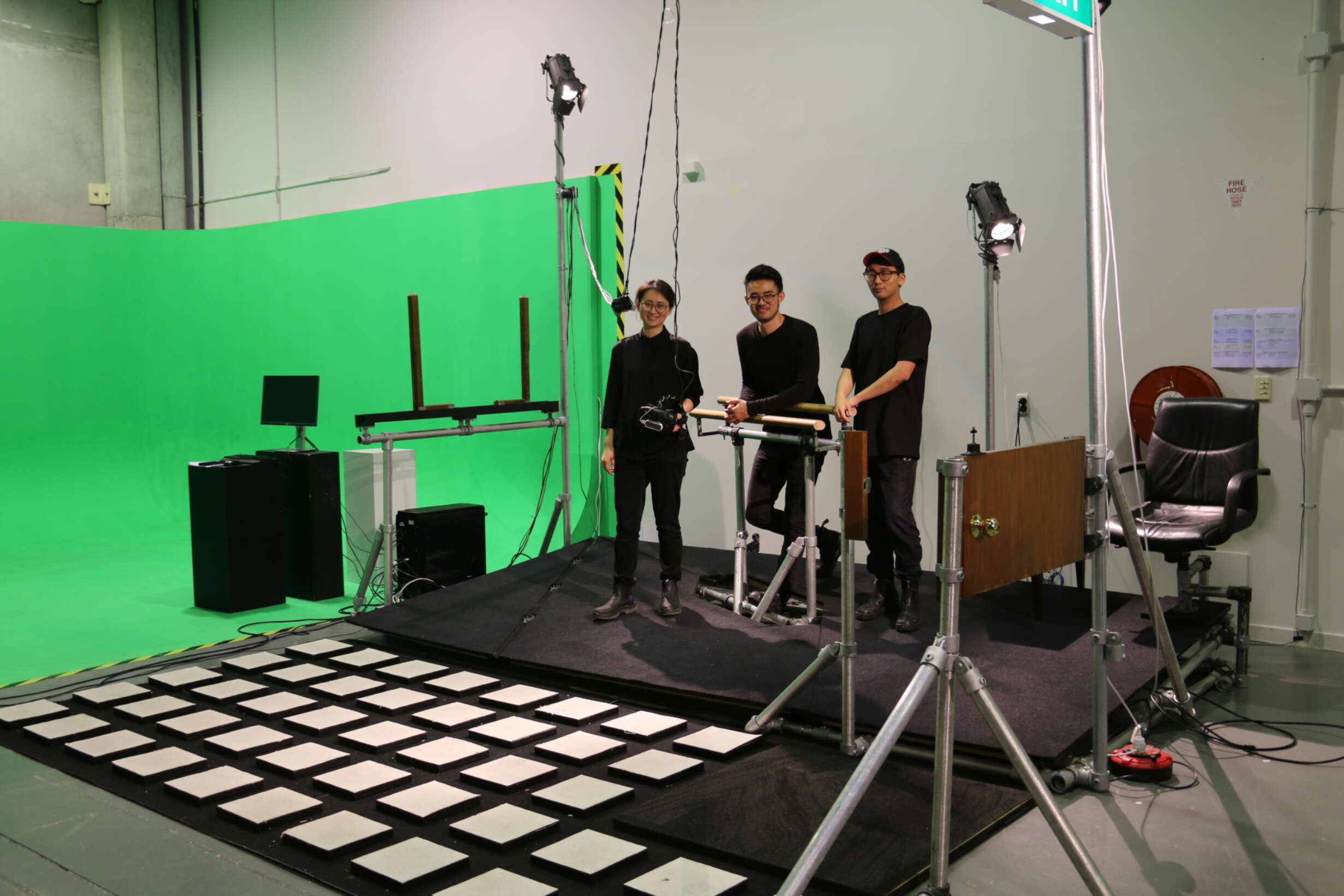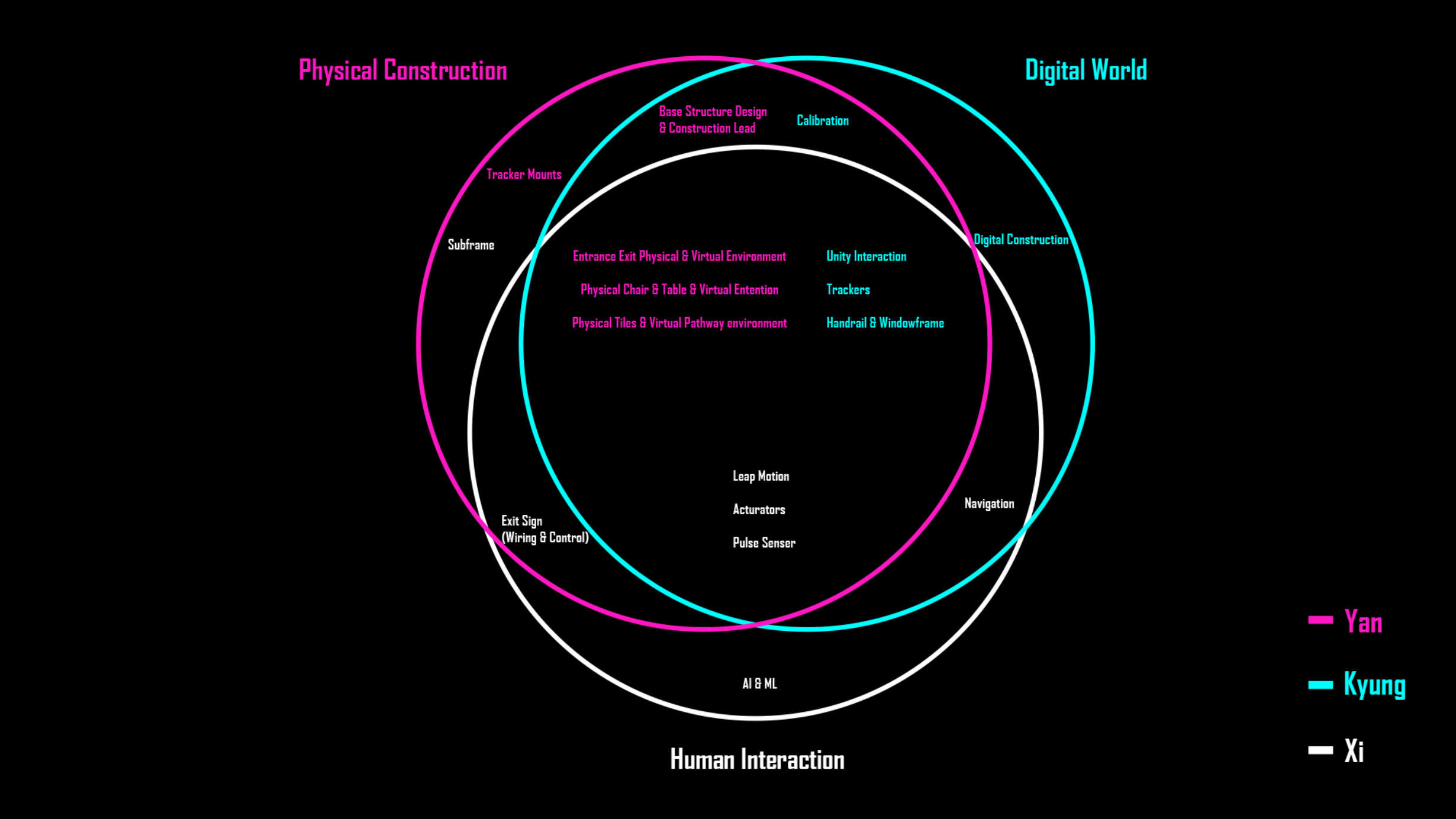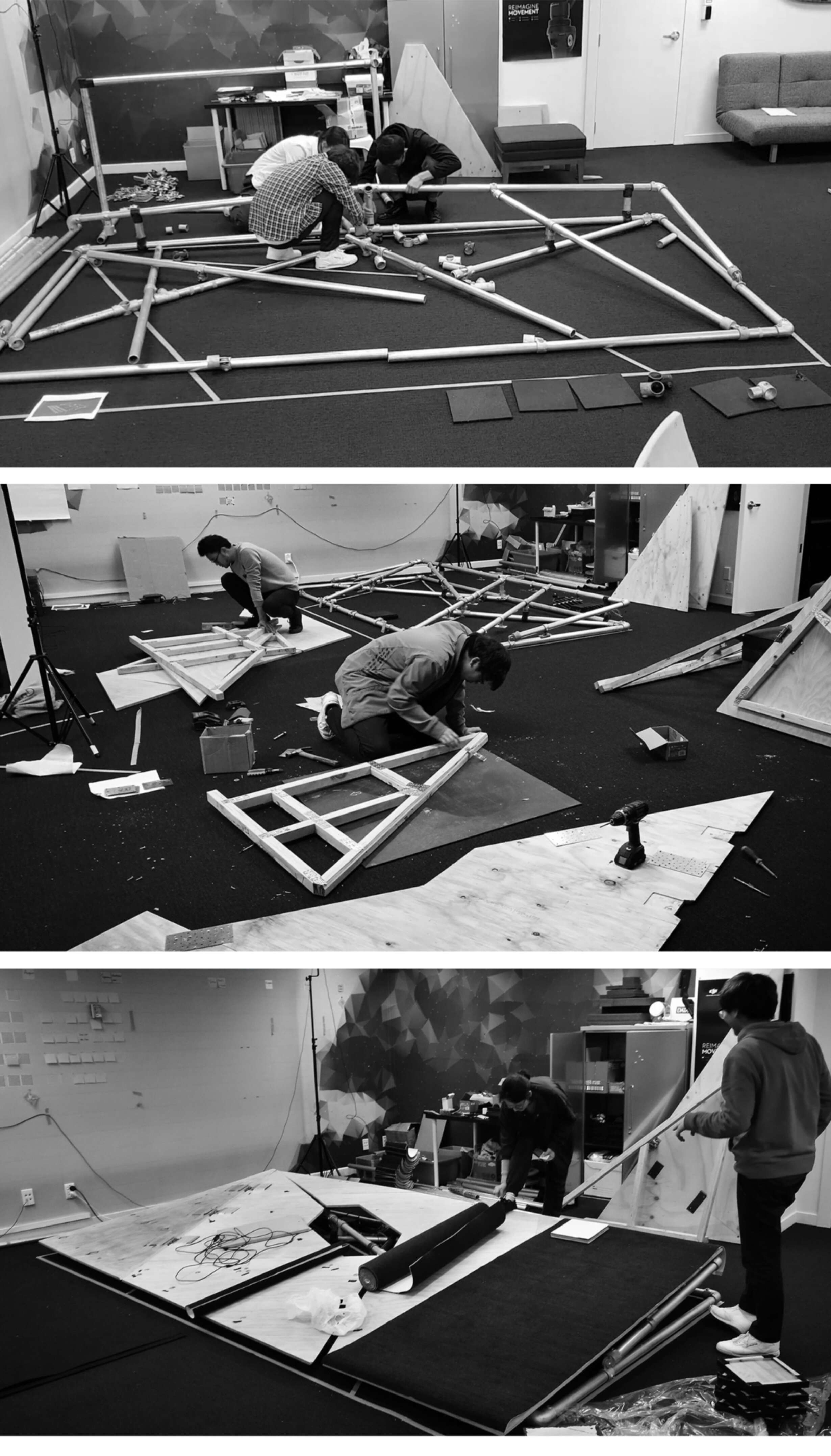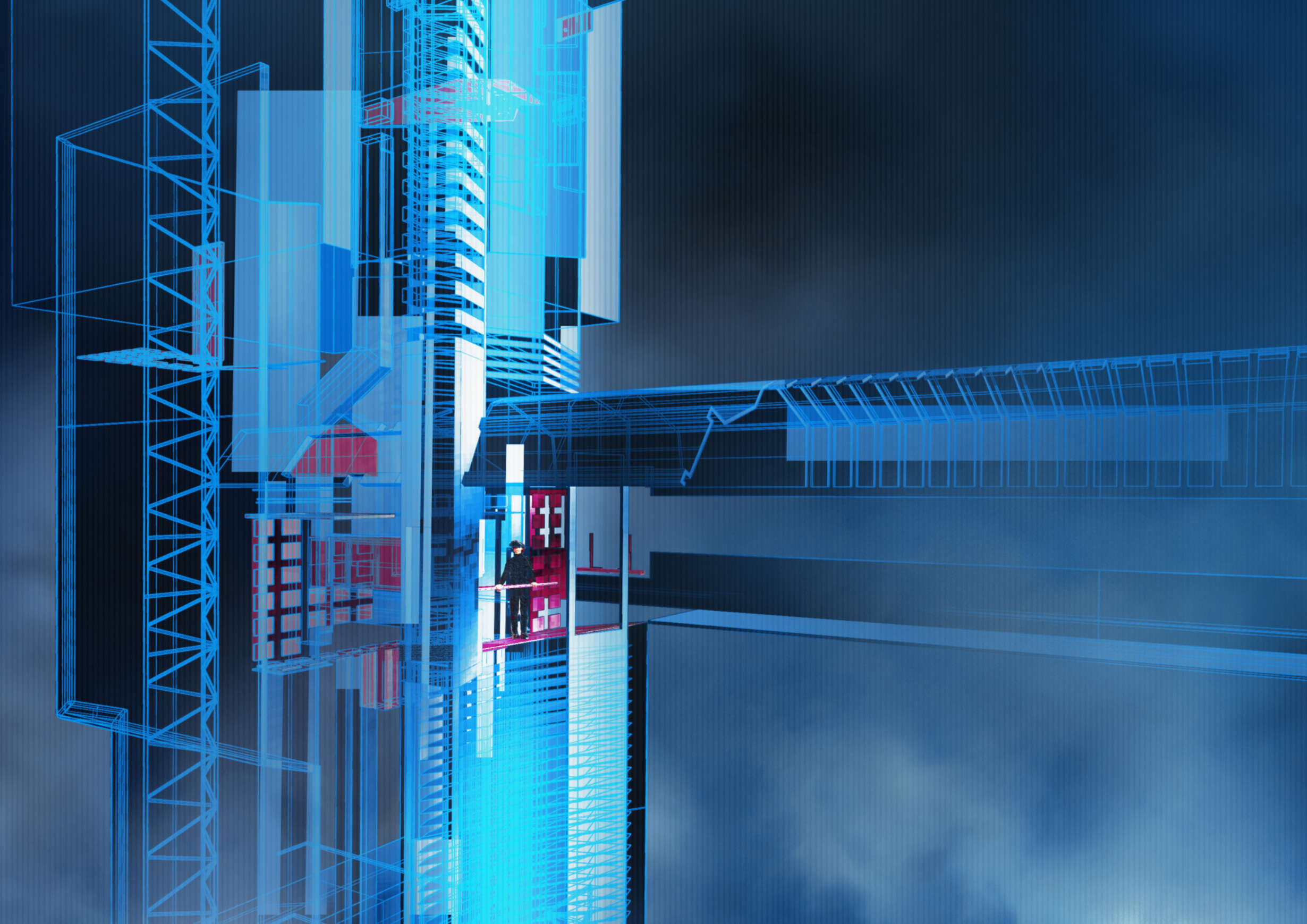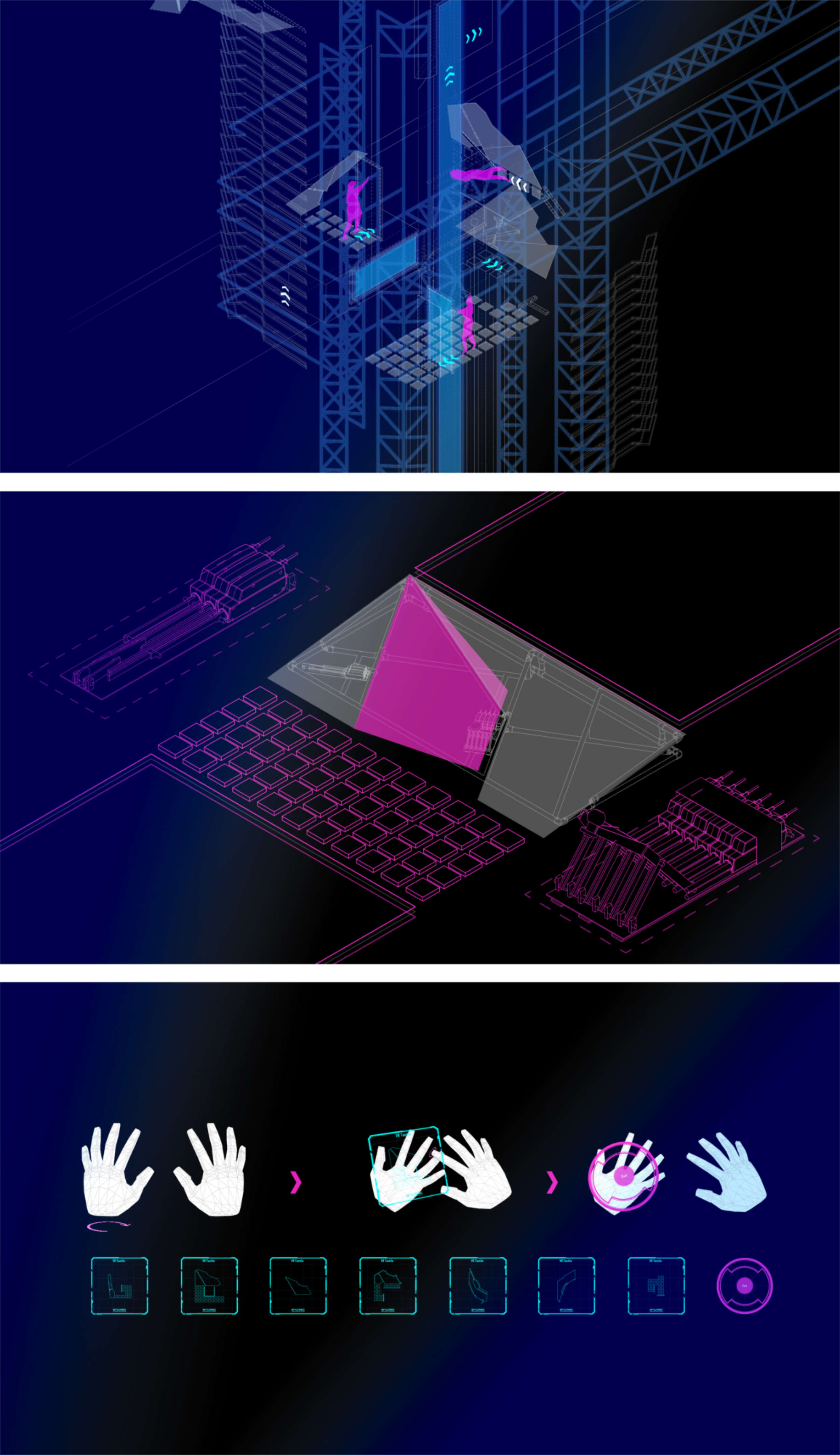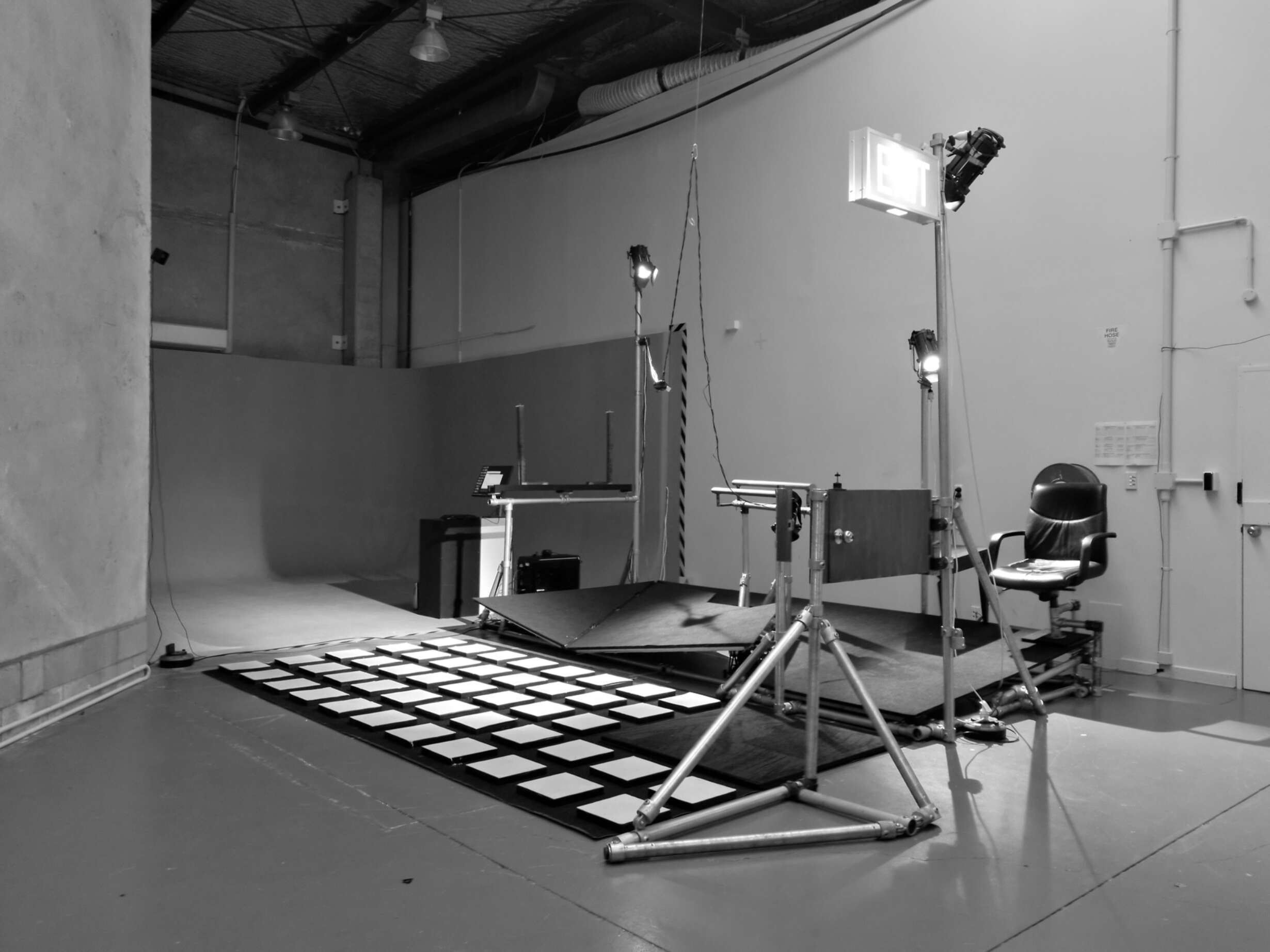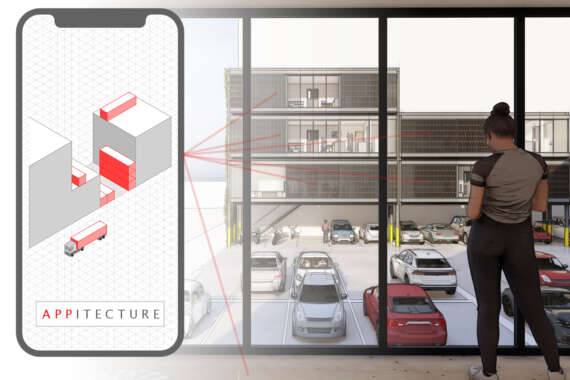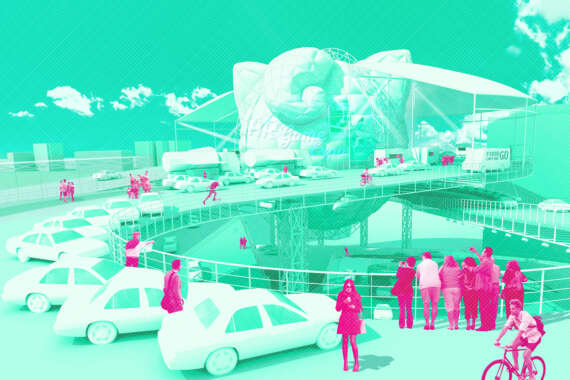VR Tactile
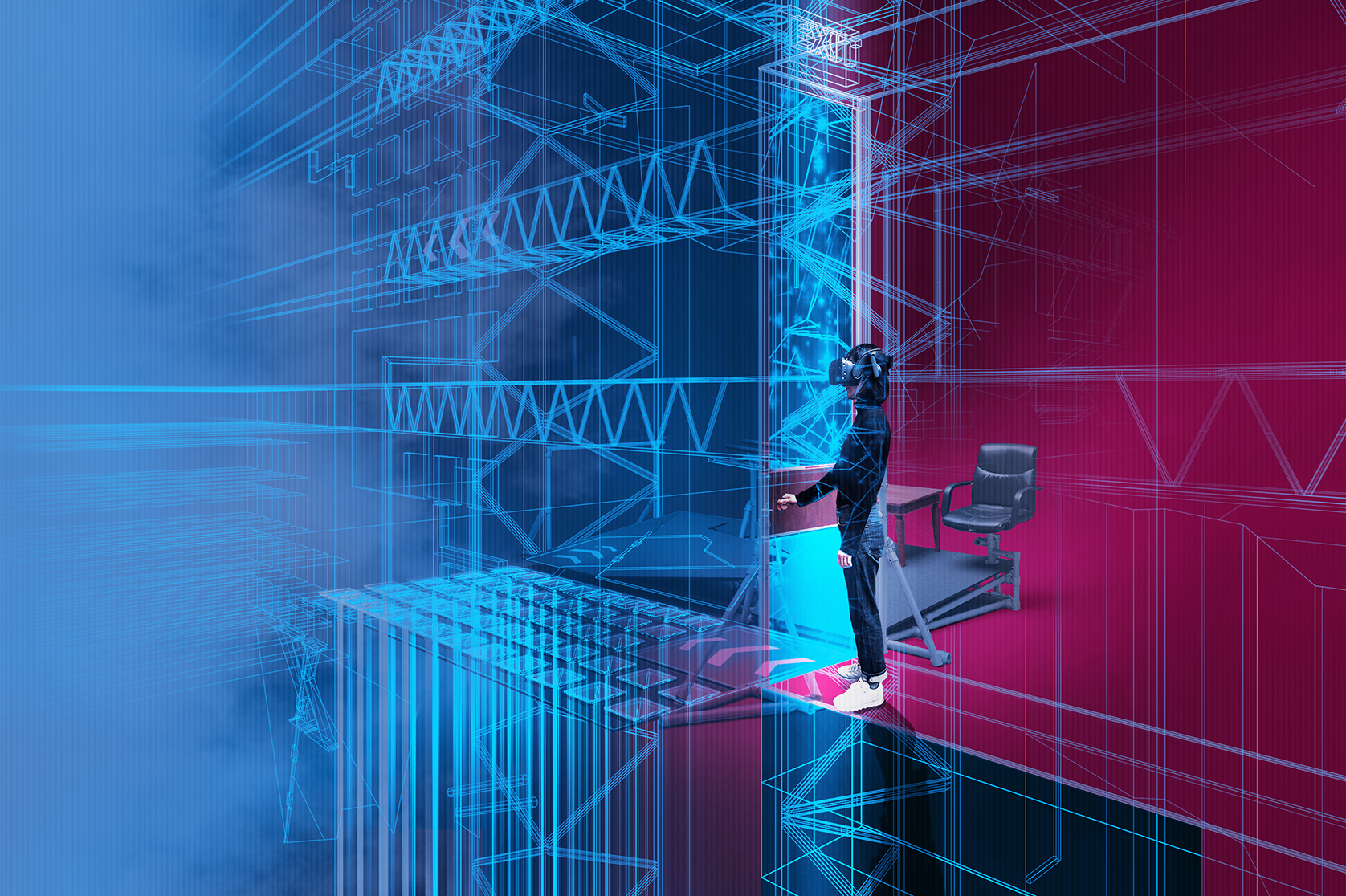
'VR Tactile' is a group thesis project embedded in the Lab for Digital Spatial Operations [arc/sec] at the University of Auckland. The team of three students have been working at the AR/VR Garage, New Zealand’s leading innovation hub for AR/VR technology. 'VR Tactile' is a haptic digital architectural environment that combines physical materiality with digital information to create a multi-sensory, interactive experience. It uses virtual reality headset HTC VIVE, 1:1 physical installation with kinetic components, and game engine Unity to make digital information touchable and manipulatable in architectural settings, thus creating a new form of architecture.








